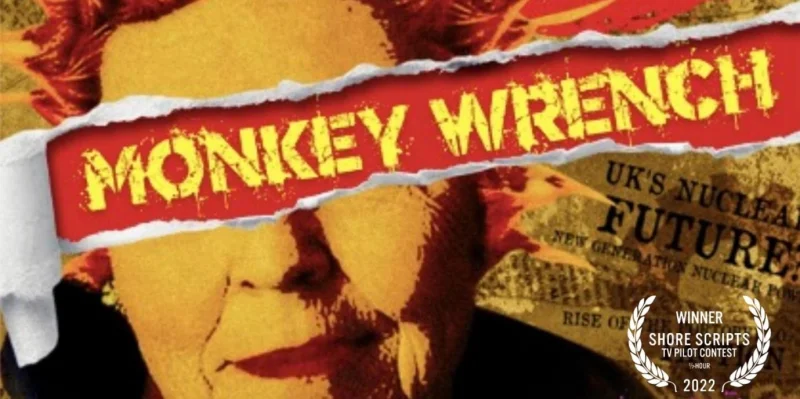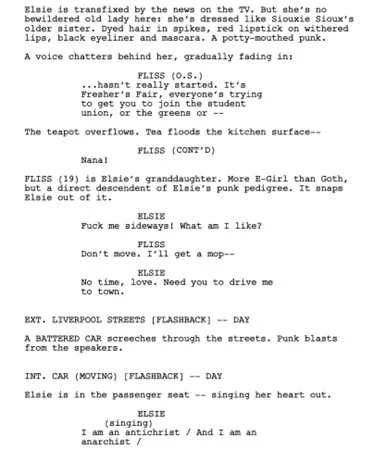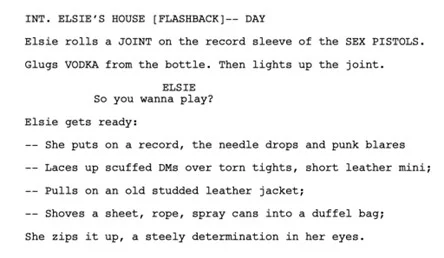
Screenwriting Contests Success Story Tips/Advice
Anatomy of a Winning 1/2-Hour TV Pilot
by Shore Scripts
Article, 4 pages
Viewed by: 5 Residents and 342 Guests

Anatomy of a Winning ½-Hour TV Pilot MONKEY WRENCH

By: Laura Huie
Shore Scripts created the Anatomy articles in response to repeated requests to share successful scripts from our contests so that other emerging screenwriters could learn from their examples. Placing in a screenplay contest can create value for a writer’s IP and so meeting this request presented a challenge. How do you share what needs to stay private – at least for a while?
Deconstructing what made our Judges and readers select a script for placement, rather than publishing the script in its entirety, was a way to meet this challenge. And, we think, it is even more, useful to writers considering entering our contests. We thank our former Winners and Finalists for sharing their scripts with us and allowing us to share our evaluations with a wider community.
Read on to find out what, for us, makes a great ½-hour TV Pilot script.
We’re going to break down the key elements of the 2022 Grand Prize Winner of our Half Hour TV Pilot contest: MONKEY WRENCH written by Ian Masters and Jon Smith.
LOGLINE: A geriatric punk re-forms a 1980s eco-terrorist group in a Cheshire retirement home to plot one last triumphant act of eco-sabotage against the UK’s nuclear future.
When writing a television show, executives want not only to see an original premise and compelling characters but that you have the imagination to sustain these things throughout a whole season (and more). So, if you’ve ever wondered what else makes a successful halfhour script, keep reading!
THE PREMISE
Not only do you need a strong core concept that has immediate appeal, but your idea also needs to be big enough to carry the series for as many seasons as possible. When writing a TV pilot, the first thing you need to consider is whether your premise has a series engine, or what drives every single episode in your television series.
One way to determine whether your idea has enough legs is to ask yourself if you can easily picture the ending or conclusion. If you can, your idea may be more suited to a movie, but if your concept contains lots of potential outcomes, and avenues, and creates new questions—then your idea could become a great match for a television series.
MONKEY WRENCH is about a grandmother with conviction and an attitude, an agenda, and a talent for acting. The protagonist, Elsie Cunningham, is on a mission to deal a fatal blow to Britain’s nuclear industry and she is prepared to go to extraordinary lengths to achieve it. In this first episode, we get a strong sense of the series arc—Elsie’s fight against Beaufort Power—through her combative visit to their headquarters. On a more familial note, Elsie also clashes with her no-nonsense, practical daughter Genevieve, who insists on placing Elsie into an assisted care home.
THE HOOK
The first few pages of any story need to grab the reader’s attention right from the start, and one great way to do that is to subvert expectations. In MONKEY WRENCH, a bomb hoax is gripping and the surprise of finding an old lady taped up to the device is a terrific hook.

Elsie might say the stakes are planet Earth, but on a more personal level, this is possibly her last mission – although she might not be ready to admit that to herself just yet. We will no doubt learn more about what lies behind Elsie’s convictions as the story unfolds, but perhaps she wants to go out with dignity, fighting for what she perceives to be right until the very end.
CHARACTER
In a television show, your characters must be engaging enough to keep the viewers coming back each week. Introduce your protagonist during the first act—preferably by the first 1-2 pages, and you’ve got to make sure that we either want to root for them or that they’re intriguing enough to make us want to keep following their journey.
Plus, with only half an hour to fill, you should keep your cast small and manageable. Design your supporting cast to complement and conflict with your protagonist who they will either help or hinder along the way.
In this half-hour pilot, Elsie Cunningham is a great example of an active protagonist. One of her most effective ploys is subverting and exploiting people’s stereotypes of little old ladies, whether it’s by staying true to her punk rock heritage or pretending to be a bewildered soul with a limited grasp on reality. It’s the perfect subterfuge. More often than not, Elsie’s performance is a means to getting her way, and she doesn’t care who she manipulates, whether it’s the police or members of her own family.

Besides Elsie, MONKEY WRENCH boasts a unique range of characters, and that is one of the strengths of this pilot. From Elsie’s eccentricity to Genevieve’s neurotic stress, to DCI Clarke’s hot temper, they are strongly differentiated from one another and have their unique voices.
STRUCTURE
If you’re trying to break into television, showing that you can master the basics is a must. Half-hour shows will often stick to the same 3-Act structure that features use—just in a much shorter page length. There’s also room to include teasers, tags, and cold-opens to bookend your script as well.
In a general 3-Act Structure, there is the set-up, confrontation, and resolution. The typical First Act introduces your characters, the world, primary themes, and major conflict. During the Second Act, your protagonist(s) tries to solve the central conflict but obstacles (and your antagonist) get in their way. And the Third Act is where there is some time of resolution in which the conflict you set up in the first act is tied up. But since this is television, you leave room for more stories to take place in future episodes—this is where cliffhangers and tags come in. Consider introducing a new surprise the audience won’t expect. Your protagonist may come face-to-face with a life-threatening situation, or a shocking revelation comes to light, thwarting your protagonist’s goal.
The overall structure and pacing are also strong points of MONKEY WRENCH. The script zips along and packs a lot into its 31 pages. And each flashback section is like a vignette with its own story that does not slow down the urgency of the present storyline.
The ideal length of a half-hour script is between 25-35 pages (if you’re entering your script into a contest, make sure to double-check their rules regarding page count first!). Everything has to be leaner and more effective than if you were to write a feature. Use strong imagery instead of long-winded setups, keep dialogue short and punchy whenever possible, keep the chunky dialogue for pivotal story beats, and try not to let scene descriptions go on any longer than two lines on the page.
VOICE
Your pilot needs to carry a strong, distinct voice. Voice is a compilation of how you write your action lines, descriptions, dialogue, etc. Two writers can write similar stories with similar characters and plotlines, but the key element that distinguishes one from the other is voice.
In MONKEY WRENCH, the writers’ voices are strong, and they both meld together to create a no-holds-barred, 1980s rock n’ roll attitude. For instance, you can get a powerful sense of voice not only from their dialogue but from how they write action lines as well.

CONCLUSION
Overall, MONKEY WRENCH is an entertaining read built around a compelling central character of a kick-ass granny. Alongside the fun of Elsie’s shenanigans, it touches on serious topics, like the pressures on families struggling to care for their elderly relatives as they enter the final phase of their life and the perils of nuclear energy – but it is never preachy. The writing meets the majority of essential elements needed for a half-hour pilot: a strong story engine, distinct characters, central conflict, and a well-developed voice.
Learn more about MONKEY WRENCH’s grand-prize win from Jon Smith, co-writer of the script.
We hope this breakdown of a winning script will encourage you to keep writing and write the best draft you can.
-------------------------

Laura Huie is an experienced writer and editor involved in comedy-drama screenwriting, fiction editing, and full-time marketing copy. Laura is also a freelance article writer for Shore Scripts and has worked with Script Pipeline on their live Symposium series. She is one-half of the screenwriting duo, Bloom & Huie. Together, they have written multiple television series as well as a feature-length film.
Their mission is to write honest and witty female stories wrapped up in unbelievable worlds.





